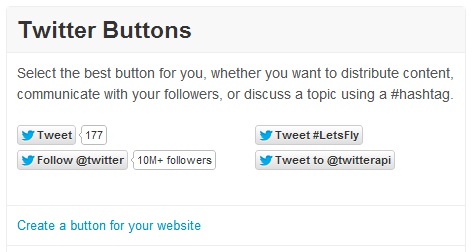 One of the most transitive aspects of the social web, or web 2.0 for lack of a better term, is the proliferation of third party integration. At one time it would be considered treason to heavily integrate another website’s functionality into your own. As the Internet becomes more social, the focus is moving away from competing with the existing hosts of the public discussion, and moving toward integrating with them.
One of the most transitive aspects of the social web, or web 2.0 for lack of a better term, is the proliferation of third party integration. At one time it would be considered treason to heavily integrate another website’s functionality into your own. As the Internet becomes more social, the focus is moving away from competing with the existing hosts of the public discussion, and moving toward integrating with them.
What services should you integrate with? How should you do it? Are there any resources available?
What Services Should You Integrate With?
There are many services available for integration. In the case of Holla At Ya Girl, we have integrated with countless sites and services like Youtube, Tinychat, and Soundcloud. All of these technologies have been integrated in such a way that it enhances the user’s already, hopefully, positive experience on the site.

On each HAYG profile page we display a prominent YouTube video for users to introduce themselves or share something that represents their personality.
When you are thinking about integrating, one of the most important things to consider is the popularity of what you want to integrate. How does that service relate to your audience, and how does it fit into the user experience of your website? Ideally, there would already be a high crossover rate when it comes to existing users. For example, the majority of Tumblr users are already active on Twitter. A case can be made for services that aren’t as popular however, especially if the service is pertinent to your community.
There are many possible uses for integration. Most popular media sites will now allow you to log in with your Facebook account, and share your favorite articles with a single click. Registrations skyrocket when you simplify the process. You may want to integrate so users can get some use out of your content while they’re on other websites. Users who spend several hours on Facebook and little time elsewhere will be more likely to interact with your website if you reach them through Facebook. In other instances, the goal is to allow the use of a third party application through your website, either to enhance the user experience, or to allow users to use another site without leaving your domain.
Integration with the right services can not only improve user experience, but will also assist in increasing your site’s popularity. If your site has a strong focus on multimedia, integration with Youtube, Metacafe, Soundcloud, Hulu and other similar services would be your best bet! If your site has a strong focus on image manipulation and sharing, integration with Instagram, Tumblr, Picasa, Flikr, Pinterest and similar sites would be the way to go! Keep it pertinent and natural; don’t add widgets and things just because you can.
How Should You Do It?
Most sites, like HAYG, provide libraries and a fully functional API to assist in full integration. TAKE ADVANTAGE OF THIS! If you can save time by using the access that’s already available, that time can be used to improve your product in other areas! Trying to create a workaround to retain a minimal amount of control is antithetical to the social web. This will only take up more time and in most cases reduce functionality. I’m not saying that it is always a bad idea, but it’s usually unnecessary and is often against the ToS of the site you’re integrating with.
Adam Justice, founder of Social Media Sun, provides a great example of how simple integration can add functionality while remaining intuitive. Successful integration with popular sites like Facebook, Twitter, and Gravatar make life a little easier for Social Media Sun users, and also assist in performing specific tasks on the site. Make sure your integration has a purpose and is something that will prove useful to your end user.
Are There Any Resources Available?
A developer’s best friend is documentation! Documentation detailing the specifications of APIs and how they can be used should be your first place to look. If you are familiar with the API, you know what is available. If you know what is available, you will know how to maximize the use and value of whatever you are interested in integrating. Google has every detail of their APIs and pretty much everything else they have documented in a clear, specific, easy to understand format. Facebook’s Open Graph has become the standard for many social plugins in use today.
For users who have little web development or coding experience, social websites will often do the development for you because they’re as eager to integrate with you as you are with them. Facebook’s Social Plugins page offers a number of widgets you can integrate by simply copying and pasting a few lines of code from a snippet. Twitter for websites makes adding a “Follow Me” button just as easy, and now allows you to embed Tweets with just a few lines of code.

Twitter makes generating code for button integration as simple as filling out a form. Just follow each step, and insert the code on your website when finished.
If you have an integration idea that you can’t program yourself and isn’t available as a plugin, I suggest looking in to getting it developed for you. Some features that you think would be extremely hard to integrate are actually very simple. However, the opposite is also true; some features that seem very simple are actually very difficult. You will never know unless you ask, and if your idea is good enough developers will often write code for company stock. Joe Fernandez outsourced the entire development of Klout, and actually moved to Singapore for a few months to work directly with the developers he had hired.
Support and Q&A forums offer free help for developers who are motivated! If you find yourself in a tough spot or just need pointed in the right direction, sites like Stackoverflow and Appcelerator are community standards. They both have an entire community of developers who are knowledgeable in this and many other aspects of development.
Conclusion
Integration can make or break a site. If integrated properly, you can expect your users to enjoy your site more and invite more of their friends. Improper integration will cause a decline in user satisfaction. I encourage readers to visit Holla At Ya Girl to see what is possible. Version 4.0 just launched a few weeks ago and includes many new features, most integrated from third parties.
I am always curious about cool new integration ideas and to see just how people use integration to enhance their own projects. How has integration affected your site?
- Third Party Integration - June 21, 2012
- My First Social Network: A Modern Developer’s Right of Passage - May 7, 2012
